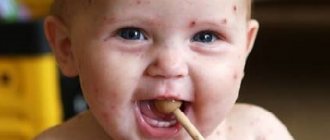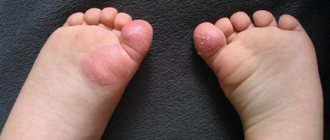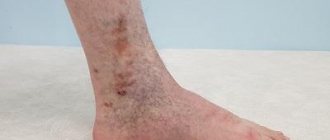Although the exact etiology of this disease has not yet been determined, in most cases of vitiligo in children is associated with a genetic predisposition, the presence of this autoimmune disease in the family tree. Only timely treatment of vitiligo by a highly qualified dermatologist can bring positive results.
The Medic+ clinic employs highly qualified specialists. And the most experienced dermatologists in Voronezh work here. Treating vitiligo in children is not an easy task, so leave this job to professionals.
This is a disease that can be detected with the naked eye as it is characterized by the appearance of well-demarcated depigmented areas on the child's body. This is the result of the manifestation of certain disorders, when, against the background of the destruction of melanin in the body, the number of melanocytes, which are responsible for pigmentation, decreases, they cease to function properly and, as a result, the dermis loses its natural pigmentation. The lesions look like white spots, which can be of different shapes and sizes, their localization can also be different (they can be located both on the skin and on the mucous membranes).
How to cope with this disease in children? What treatments are there for vitiligo? It is worth noting that children need special care and support. That's why we decided to share some recommendations with you.
Symptoms and signs
The leading sign of the development of vitiligo in children is the appearance of characteristic spots on the skin. Their development takes a long period of time. Vitiligo takes a long time to form. At the initial stage, the spots turn pink, becoming milky over time. In young children, spots on the skin are most often oval or round in shape. As the child grows and develops, changes in both shape and color may occur. The following manifestations of vitiligo in children may also occur:
- compaction of stains;
- the appearance of local hyperemia (increase in temperature at the site of skin changes, this can be felt to the touch);
- change in skin tone in the area of the spots to a lighter color (after sunbathing).
Surgery
This is a radical method that is used as a last resort when standard treatment does not produce results.
The most commonly used types of operations are:
- skin grafting;
- artificial growth of skin;
- artificial introduction of melanin into the skin;
- skin plastic surgery (cosmetic surgery).
Recommendations for the treatment of plantar warts in children can be found on our website.
When should you see a doctor?
If white spots appear on your child’s skin, you should contact your pediatrician. At the initial stage, a specialist will be able to conduct an objective examination of the baby and draw up the necessary plan for laboratory diagnostic methods that may be required, and identify the first signs of vitiligo in the child. The attending physician will also give referrals to highly specialized doctors.
Since vitiligo is a multivalent disease (it involves not only the immune system, but also the nervous system), treatment must be comprehensive. Therefore, the child needs examination and consultation:
- dermatologist;
- immunologist;
- neurologist.
A comprehensive assessment of the child’s health status by several specialists will more likely help select the most effective treatment that will help eliminate the visible manifestations of the disease. Only a complete picture provides enough information to make decisions regarding the advisability of using a particular drug, physiotherapeutic procedure, etc.
The specialists of our medical center, located in the central district at the address: 2nd Tverskoy-Yamskaya Lane 10, will be able to determine the first signs of vitiligo in children after conducting a visual examination of the child. Therefore, when the first symptoms of a violation of the integrity of the integument appear, you should make an appointment with a doctor.
Diagnostics
Vitiligo spots at first glance can be confused with spots that occur with lichen or syphilis. However, the latter two diseases are characterized by symptoms other than skin discoloration. Thus, with syphilis, specific lesions of the mucous membrane are observed, and with lichen, the surface of the spots peels off.
The most accurate way to determine vitiligo is by shining a Wood's lamp on the spots. Under it, the affected areas will be highlighted blue-white, and areas where the pigment has just begun to disappear will also become visible. When visiting a dermatologist, it is better to insist on this diagnostic method.
Causes
The causes of vitiligo in a child are associated with impaired pigmentation of certain areas of the skin due to a lack of melanin pigment. From Latin this term is translated as “skin defect”. The development of external manifestations of the disease occurs as a result of exposure to various factors. For example, medications, chemicals, inflammatory reaction against the background of an autoimmune process, etc. Some studies show that vitiligo in children has a genetic predisposition, so the disease can be inherited.
Vitiligo is a multifactorial disease and at the moment the exact causes of its occurrence are unknown. However, experts identify several etiological factors that may influence its development.
- disturbances in the functioning of the immune system;
- taking pharmacological drugs;
- genetic predisposition;
- disturbances in metabolic processes;
- infectious diseases;
- exposure to various chemical factors;
- intoxication of the body.
These are the most common factors.
But there are others that also influence the origin and development of this pathology. This:
- hormonal imbalances;
- disruption of the endocrine glands;
- parasitic diseases;
- injuries affecting the central nervous system;
- psychological trauma4
- mental characteristics of young children.
Despite the large number of studies conducted, it was not possible to establish a clear connection with one of the factors. The skin disease vitiligo in children is mainly associated with genetic abnormalities that influence the synthesis of melanin.
About vitiligo in children.
Vitiligo is a chronic skin disease of unknown etiology and although it is not contagious, it negatively affects the appearance of the child. And because of this, it can be argued that in the case of children it has a much greater psychosocial impact.
Vitiligo is much more common in childhood than in adults. According to statistics, this is a fairly common disease, affecting about 2.16 percent of the world's population, with a third of them affecting children.
At first, the disease may manifest itself in segments. Thus, the first small spots appear on inconspicuous areas of the body, so they are not given much importance. And this is a very important point, since timely identification of the problem greatly facilitates treatment and improves the prognosis. Consultation with a dermatologist is required when the first suspicious signs appear.
Treatment
Treatment of vitiligo in children is carried out comprehensively. When using pharmacological agents, the emphasis is on the following drugs:
- antioxidants - a group of agents whose effect is aimed at blocking free radicals, the effect of which adversely affects cells, tissues and biological substances (in this case it is melatonin);
- immunomodulators are a group of drugs whose effect is based on correcting the functioning of the immune system and reducing the intensity of autoimmune processes.
Specialists of JSC "Medicine" (clinic of academician Roitberg) have sufficient professional experience and knowledge to prescribe therapy for vitiligo even to the youngest children. Therefore, parents do not have to worry about the safety of the drug used and the method of treatment. The doctor will immediately provide instructions and warn about possible adverse reactions if they have previously been encountered in medical practice.
The following is used as physiotherapeutic procedures for vitiligo in children:
- ultraviolet radiation to enhance pigmentation at the site of exposure;
- laser exposure to stimulate metabolic and regenerative processes in skin cells;
- PUVA therapy is a technique based on the use of photoactive components.
At the moment, innovative methods of surgical treatment of vitiligo are being effectively developed. The essence of the procedure is to “plant” intact melanocytes, which are capable of producing melatonin, on the affected areas of the skin.
This innovative technique allows you to cope with the disease without further use of medications. Shows pretty good results.
If you follow the treatment plan drawn up by the specialists of JSC "Medicine" (clinic of Academician Roitberg), you can notice significant changes:
- there is a significant reduction in the size of white spots;
- the pigmentation disorder becomes less pronounced due to a decrease in contrast and darkening of the affected skin areas.
Aesthetic problems prompt patients and their parents to worry exclusively about the manifestations of the disease on visible parts of the body (face, neck, hands). Unfortunately, at the moment there are no drugs that would have such a targeted tropism and contribute to the darkening of the affected skin on the face. All medications used to stimulate melatonin production have the same effect on all parts of the body.
The main difficulty of all therapy is the impossibility of prescribing drugs in sufficient dosages to young children. Medicines have a starting dosage, so using a smaller amount will be ineffective, and using enough can provoke the development of adverse reactions.
To achieve the desired result in therapy, conduct a complete examination of the child and strictly follow the doctors’ prescriptions.
Classification
Vitiligo, depending on the location of the spots, is divided into three main types:
- localized form: spots are located in certain places;
- generalized form (the most common form): spots are located throughout the body;
- universal form (occurs least often): almost complete loss of pigment (more than 80% of the body area).
In turn, the main types are divided into subgroups. The generalized form includes acrofacial vitiligo (face and limbs only), vitiligo vulgaris (spots scattered symmetrically throughout the body), mixed vitiligo (a combination of different types). The localized form includes focal vitiligo (spots are present in 1–2 areas), segmental vitiligo (spots are located on one side of the body), mucosal vitiligo (spots are present only on the mucous membranes).
There is also a division according to the type of spots:
- blue spot - spots have a bluish tint;
- inflamed spot - the border of the spot is inflamed and raised;
- tricolor spot - between healthy skin and the spot there is a medium pigmented zone;
- four-color spot - in addition to three colors, a zone of strong pigmentation appears around the spot.
The course of the pathological process with vitiligo is divided into types:
- stable appearance: a white spot appears and remains unchanged for a long time;
- progressive type: there is a constant progress of the depigmentation process, sometimes it happens quickly, sometimes slowly;
- unstable appearance: some spots disappear, while other formations increase.
Adviсe
With timely treatment and correctly performed complex therapy, vitiligo may not completely disappear, but the severity of visual manifestations is significantly reduced. The clinic’s specialists ensure that treatment of vitiligo in children produces visible results. If you follow all the doctor’s recommendations, the contrast between the affected and healthy skin is reduced, and the volume of discolored areas is significantly reduced.
If there is a need to quickly and temporarily restore a normal aesthetic appearance to an older child, then to achieve a short-term result, you can use decorative cosmetics. It is important to consult a doctor in advance regarding the correct selection of cosmetics, and then use the stylist’s tips. There is no need to choose cosmetics for your child’s delicate skin on your own, as it can only lead to an increase in the manifestations of the disease.
It is worth paying attention to the composition; it should not contain the following components:
- synthetic compounds;
- aggressive substances, even if natural agents (acids, alkalis) are used in their production;
- various fragrances.
When visiting a specialist, you can ask about the results and success of treatment for vitiligo in children. Consultations with doctors will teach parents how to deal with this disease and quickly reduce its visible manifestations.
Forecast
What does Dr. Komarovsky say about the prognosis for the recovery of a child with vitiligo? No doctor can give an accurate prognosis. In some cases, it is possible to completely return the skin to its previous appearance, while in others, the treatment has no effect.
The reasons lie in the individual characteristics of the patients’ bodies. However, it is worth knowing that this disease does not entail serious consequences or complications.
In some cases, there is a risk of developing cancer, but the probability is very low.
Patients with vitiligo lead the same life as everyone else. The only difference is skin color.











